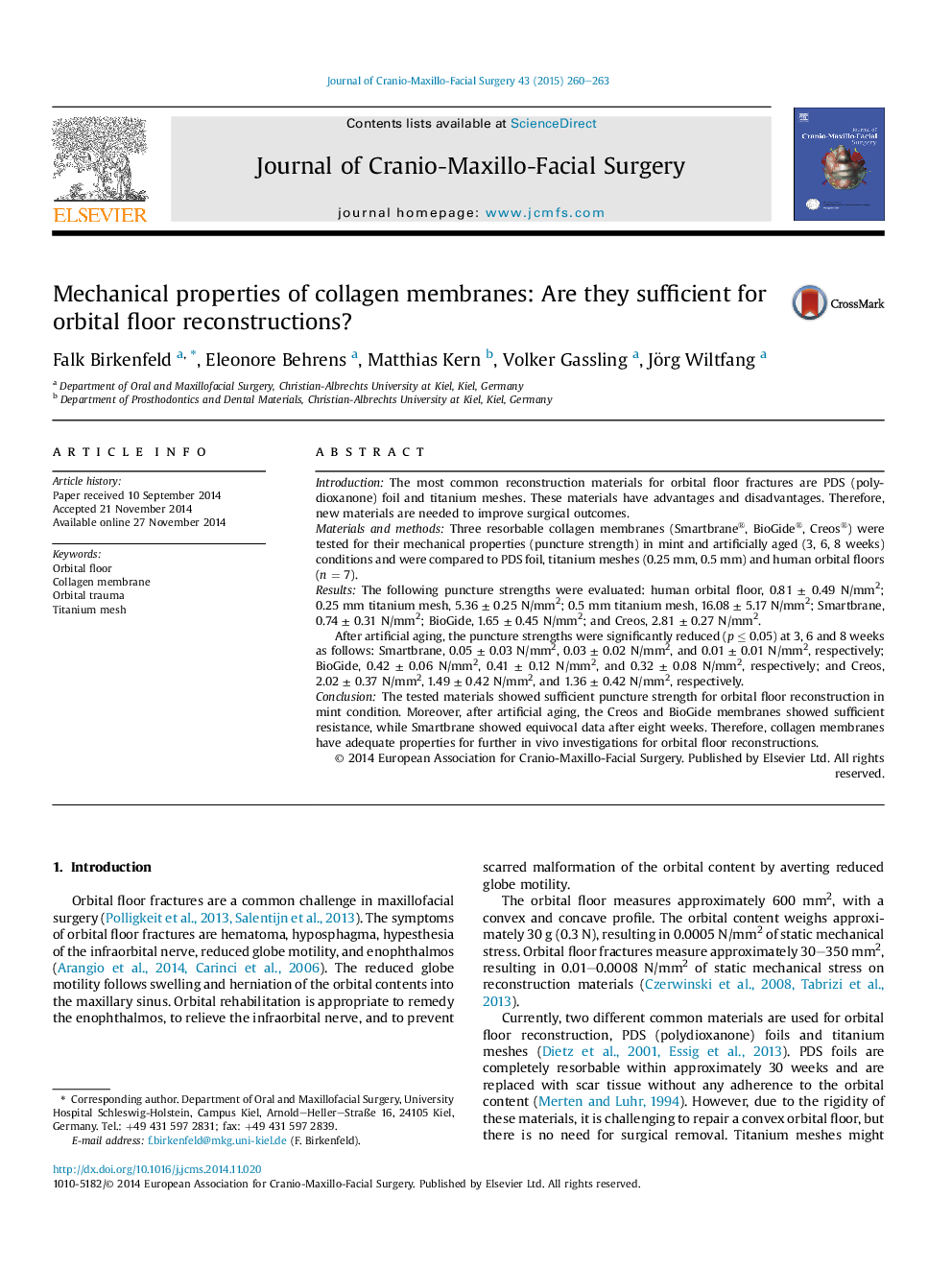| Article ID | Journal | Published Year | Pages | File Type |
|---|---|---|---|---|
| 3142691 | Journal of Cranio-Maxillofacial Surgery | 2015 | 4 Pages |
IntroductionThe most common reconstruction materials for orbital floor fractures are PDS (polydioxanone) foil and titanium meshes. These materials have advantages and disadvantages. Therefore, new materials are needed to improve surgical outcomes.Materials and methodsThree resorbable collagen membranes (Smartbrane®, BioGide®, Creos®) were tested for their mechanical properties (puncture strength) in mint and artificially aged (3, 6, 8 weeks) conditions and were compared to PDS foil, titanium meshes (0.25 mm, 0.5 mm) and human orbital floors (n = 7).ResultsThe following puncture strengths were evaluated: human orbital floor, 0.81 ± 0.49 N/mm2; 0.25 mm titanium mesh, 5.36 ± 0.25 N/mm2; 0.5 mm titanium mesh, 16.08 ± 5.17 N/mm2; Smartbrane, 0.74 ± 0.31 N/mm2; BioGide, 1.65 ± 0.45 N/mm2; and Creos, 2.81 ± 0.27 N/mm2.After artificial aging, the puncture strengths were significantly reduced (p ≤ 0.05) at 3, 6 and 8 weeks as follows: Smartbrane, 0.05 ± 0.03 N/mm2, 0.03 ± 0.02 N/mm2, and 0.01 ± 0.01 N/mm2, respectively; BioGide, 0.42 ± 0.06 N/mm2, 0.41 ± 0.12 N/mm2, and 0.32 ± 0.08 N/mm2, respectively; and Creos, 2.02 ± 0.37 N/mm2, 1.49 ± 0.42 N/mm2, and 1.36 ± 0.42 N/mm2, respectively.ConclusionThe tested materials showed sufficient puncture strength for orbital floor reconstruction in mint condition. Moreover, after artificial aging, the Creos and BioGide membranes showed sufficient resistance, while Smartbrane showed equivocal data after eight weeks. Therefore, collagen membranes have adequate properties for further in vivo investigations for orbital floor reconstructions.
